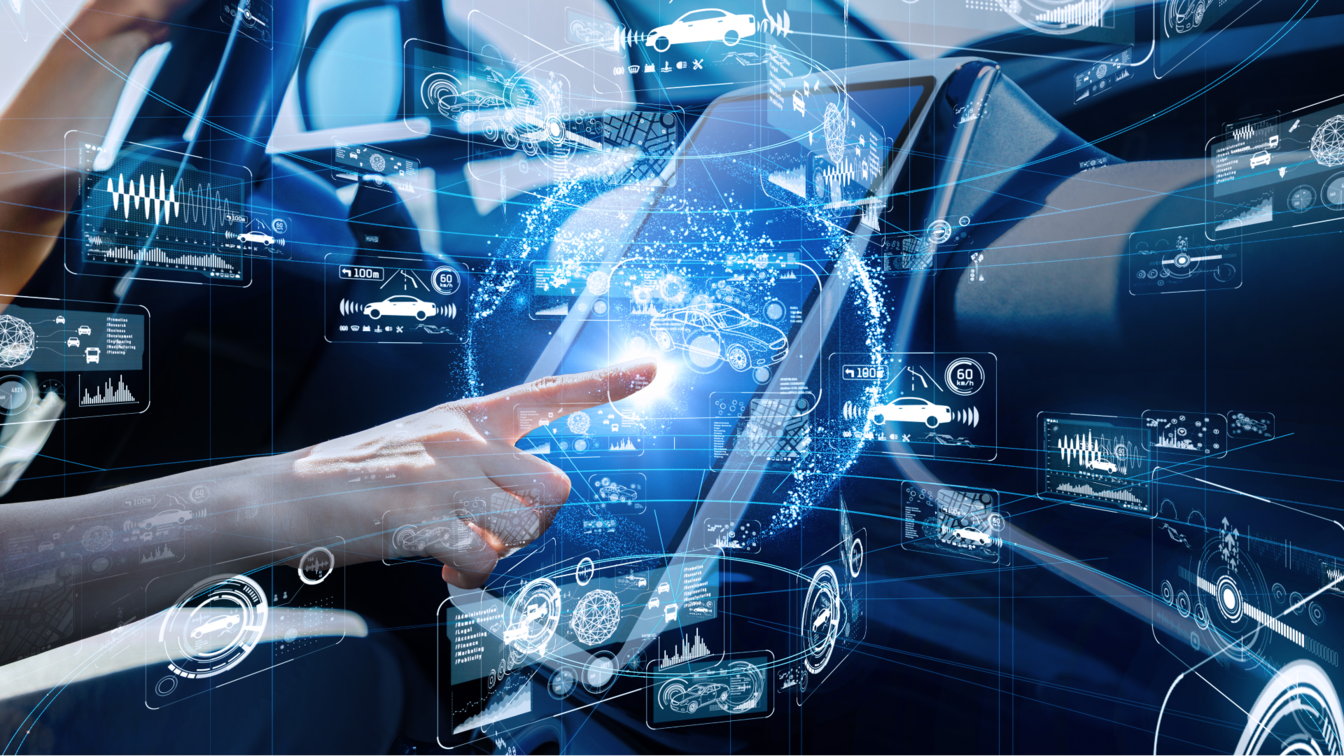February 15, 2023
How can communities effectively build transportation plans around emerging technologies, when the trajectory of those technologies is unclear even five years out (much less 30)? This question motivates us to track the evolutions and predictions of transportation technologies from every angle we can: where the technology is heading, what the research is showing, and what’s making the biggest impact today. In December and January, we had the chance to attend several major conferences that collectively addressed this spectrum of planning for emerging technologies:
- Consumer Electronics Showcase (CES) is a global event in which manufacturers, developers, and suppliers of consumer technology present their latest innovations and big ideas. Attending CES is useful to our work because of the role of consumer adoption in the fate of connected, automated, and electric vehicles. When it comes to personal vehicles, customers are in the driver’s seat of when and how these technologies will transform our transportation systems. Attending CES also helps us understand the pivots of the private companies in the space.
- The Transportation Research Board (TRB) Annual Meeting brings together thousands of transportation research enthusiasts every year to connect on research needs and present findings. Attending TRB helps us understand emerging technologies from the research side and provides a more theoretical understanding of where the industry is heading.
- The Florida Automated Vehicles Summit is an opportunity to see a more local perspective and on-the-ground implementation of automated, connected, electric, and shared (ACES) technologies. Attending summits like these complements the theoretical nature of TRB and futuristic nature of CES and arms us with practical knowledge of how technologies are being embraced by communities today.
When we combined our insights from each of these events, six clear themes emerged that we hope are helpful to communities looking to plan strategically and flexibly in the face of uncertainty. Read on for our summary of what’s on the horizon.

When we combined our insights from CES, TRB, and the Florida AV Summit, six clear themes emerged that we hope are helpful to communities looking to plan strategically and flexibly in the face in uncertainty.
1. EVs are coming, and the grid will be ready for them.
The shift in focus at CES from connected and automated vehicle (CAV) models a few years ago to electric vehicle (EV) models in 2021, 2022, and 2023 mirrors the growing share of EVs in the personal vehicle market. As battery technology advances, and both new and used EVs become more affordable, this growth isn’t predicted to slow down anytime soon. Electrification was also at the forefront of TRB, where Secretaries Buttigieg and Granholm spoke about progress toward a more robust national electric vehicle charging network, removing barriers to EV ownership, and policy interventions designed to speed up the electrification timeline to meet emission reduction goals.
To address the associated million-dollar question: yes, the grid will be able to handle this planned proliferation of EVs. Utility companies have incentive to not lose users, and they still have time on their side, as gas-powered vehicles will remain on our roads for years to come. Renewable sources of energy are also increasing, predicted to rise from 22% of US electricity generation in 2022 to 26% in 2024.
2. E-bikes are cementing themselves in our transportation systems.
When we consider which transportation technologies are having a major impact today, we can’t ignore the rise of e-bikes, which have followed similar trends to electric vehicles. Just like EVs, e-bike batteries are getting more efficient, easier to charge, and lighter weight, which will make them more broadly useful. Because of this, data is showing that people use e-bikes for longer trips than traditional bicycles.
The main takeaway here: plan for e-bikes in your transportation network! As technology improves, e-bikes will only become easier and more convenient to operate, so safe facilities for e-bike users are essential. E-bikes have the potential to become even more accessible through shared use fleets. As existing bikeshares look to expand their market, they are adding more e-bikes to their fleets, which should accelerate their adoption in multiple urban markets. E-bikes are heavier and more expensive than traditional bikes (though the cost and weight are both coming down). They might not be as easy to carry up stairs to store in an apartment or workplace. Plan for secure storage solutions that offer charging, including e-bike docking stations for shared use fleets.
3. OTA updates will change how it works to own a car.
The innovation of over-the-air (OTA) updates was prominent at CES. An OTA update is the wireless delivery of new software or settings. You may be familiar with this type of update for a mobile device, but did you know it can be used to upgrade cars, too?
Through OTA updates, vehicle maintenance costs will significantly decrease since customers can get software updates through their home WiFi. In fact, according to a presentation by Steve Greenfield of Automotive Ventures, OTA updates are estimated to save 60 billion dollars in 2025 alone.
This also makes for a completely different business model of vehicle ownership. In today’s world, when you’re ready to buy a car, you’ll typically enter a dealership or browse online with your wish list of features in hand. With OTA updates, you can add features down the road (like heated rear seats or connectivity packages), essentially making a car a subscription model. This is a big change from the way that cars have traditionally been bought and sold.

Over the air (OTA) updates will make for a complete different model of vehicle ownership.
4. The focus is shifting from selling cars to selling rides.
Another big pivot on the industry side is the change in focus from selling cars to selling rides-a continuation of the quest for a “robo taxi.” Vehicles are becoming more reliable, and EVs require less maintenance than internal combustion engines. We might start holding onto our cars longer than we have in the past. That’s great for a consumer but it’s not great for the auto industry that’s trying to sell cars. Additionally, fully driverless cars are expensive and are out of the price range for most consumers to own these vehicles individually today. As a result, auto manufacturers are shifting their business model from selling personally owned cars to selling rides through a shared fleet. Although more technology advancements are needed for fully driverless systems to be commonplace, the technology continues to progress, and the shared-use business model is there (evidenced by ride-hail, micro-transit and micro-mobility).
5. Long timelines are leading to waning hype around AVs.
A few years ago, CES felt like an automated vehicle convention. In 2023, AVs had a much smaller share of the spotlight. Why is this the case? For the most part, because the mainstreaming of AVs is following a longer timeline than investors anticipated. AV technology continues to improve-just not at the pace that was predicted. Auto manufacturers, who aren’t seeing an ROI on AV models, are choosing to step back and focus on what will sell now.
At the same time, connected and automated vehicle technology has enabled the collection of significant amounts of data. This data can be used to improve vehicle maintenance, shared with traffic signals or information centers, or used to continue down the path to more automation. Although they’re not selling to AV manufacturers as early as they thought, data providers still have plenty of available data on hand. Which brings us to our final theme”¦
6. Education is the bigger challenge than the algorithm.
In today’s data landscape, the availability of data is not an issue. The ability to analyze and interpret data is the more precious commodity. A phrase coined at CES captures the reality many agencies are experiencing: “education is the bigger challenge than the algorithm.” Which data should you procure, what specifications should you ask for so you don’t buy into duplicative data sources, and what is your plan for interpreting the data? Without answers to those questions, agencies will be left sorting through an overwhelming amount of information.
Education is a bigger challenge than the algorithm in other ways, too. For example, our industry is writing the algorithms to drive a vehicle, but we need to educate the driver that they’re still responsible to be alert and to operate the vehicle safely. We can program cars to stop for people crossing the street, but we need to educate pedestrians and cyclists to still check for cars before crossing the street. With new automated vehicle technology comes new opportunities for education, such as teaching emergency responders how to direct an AV through an intersection during traffic control or teaching riders how to request assistance if needed in a driverless vehicle. No matter how advanced the technology becomes, human education and responsibility will always be essential.

A phrase coined at CES captures the reality many agencies are experiencing when it comes to data analysis: "education is the bigger challenge than the algorithm."
So, what does all of this mean for long-range planning?
Even with how much we know now, our industry still has big questions about what transportation systems will look like in 2050. Will you be taking an e-bike to work? In a car but not driving it? Working at home with drones delivering your lunch? This brings us back to our original question: how can communities effectively build transportation plans around emerging technologies, when the trajectory of those technologies is unclear even five years out (much less 30)?
A close eye on trends, like the ones we’ve outlined here, is a key ingredient of the recipe, but it’s not the only one. The recipe for managing uncertainty also includes a grasp of foundational planning principles, a hearty helping of the right data, and-the sauce that ties it all together-a flexible and people-first approach.
The guidance provided in NCHRP Research Report 924, “Foreseeing the Impact of Transformational Technologies on Land Use and Transportation,” continues to hold true. The report provides four foundational principles to help public agency decision-makers manage the uncertainty transformational technologies bring:
- Self-assess. Develop a Technology Transition Plan for the agency. Understand what training or outside support may be needed to keep up with changing patterns (including impacts from automation, electrification, Internet of Things, etc.).
- Get data. Acquire data on the day-to-day impacts of new technologies, along with a plan for analyzing and interpreting it. At Kittelson, we’ve had the chance to work with clients to build custom dashboards that turn data from something that’s overwhelming into something that’s insightful and actionable.
- Get smart. Provide education for staff on new technologies. This is where conferences like CES, TRB, and the FAV Summit can all contribute to pieces of the puzzle.
- Be nimble. Adopt a more agile planning and policy response to the challenges of new technologies. Update plans more frequently as new technology impacts are understood, and write policy that is technology-agnostic to remain relevant as technology evolves.
The way these principles play out may be different for every community. A recent example comes from the North Central Texas Council of Governments (NCTCOG), which was looking to understand mobility-related challenges facing North Central Texas, identify ways that technology and automation could help address those challenges, and recommend policies and best practices to achieve positive results for the region. Our team worked with NCTCOG to self-assess, which included conducting an extensive outreach effort to local municipalities, regional transportation agencies, and private tech interests to understand their concerns, identify opportunities for collaboration, and develop future scenarios under which transportation technologies could be integrated into regional decision-making. We also developed a market analysis of emerging transportation technologies and a financial assessment of revenue impacts and funding sources. Our findings from these efforts led to a handbook for agencies in North Central Texas on best practices for hosting AV deployments, as well as lesson plans for students to learn about automation. These tools will help the region apply for deployment funding, educate decision makers, and motivate the next generation workforce.
What does self-assessment, data analysis, and long-range planning look like in your region? We are working with agencies across the country on their own local guidance, and welcome the opportunity to connect with you about your agency’s needs. Reach out to either one of us to start the conversation!
